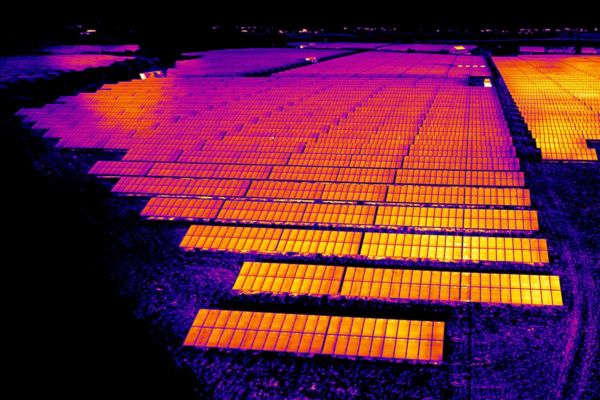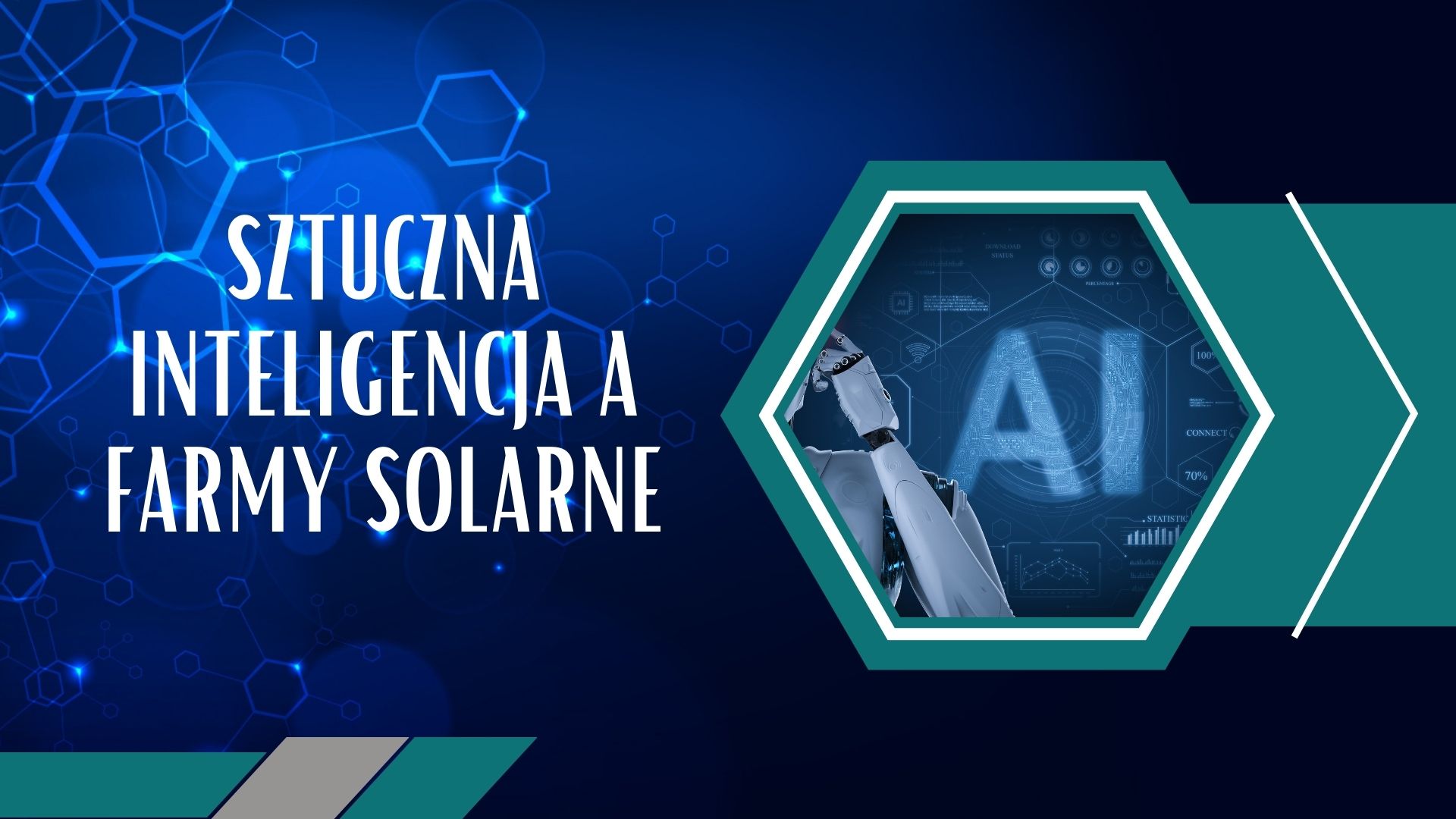Artificial Intelligence vs. solar farms
We all hear the media hype, science hype and often a bit of PR hype around artificial intelligence (AI).
Today’s smart technologies can revolutionize almost any industry, including renewable energy. For example, let’s take a peek at a rather interesting 2021 World Economic Forum publication. ”Using Artificial Intelligence to Accelerate the Energy Transition”. It addresses the role of artificial intelligence in the global transition to clean energy, covering topics from energy system management to operational risk management.
Just two years later, artificial intelligence is already being used to support many aspects of solar energy expansion and production.
Today, solar energy is one of the fastest growing sources of renewable energy. Unfortunately, the rapid expansion of solar power is hampered by major challenges related to construction efficiency, connections to existing power systems, grid scaling and cost. Still, even with intermediate efficiency, installing photovoltaic modules on even 0.6 percent of the U.S. land area could easily meet the electricity needs for the entire country. Scaling up PV volume growth is one way in which artificial intelligence can serve the solar sector.
The high cost of building solar energy systems and farms has been a deterrent in the past, greatly limiting the adoption of this renewable energy source. Because environmental factors weigh heavily in the profitability equation, each project presents a number of challenges unique to its physical location.
Stagnant interconnections, permit delays and congestion challenges are common and can further stifle projects. The problem of outdated transmission networks or rejected applications for connection conditions is not only a well-known Polish reality. This problem affects many countries around the world.
Add to that some complex permitting and operational requirements (which can vary drastically due to local regulations). In-depth environmental and aesthetic analysis, installation and supervision of specialized equipment. Exceptional government and regulatory considerations related to large-scale utility infrastructure, and expenses related to the construction of photovoltaic systems are beginning to accumulate.
Using artificial intelligence, these challenges can be managed faster and more efficiently, while minimizing project costs.
Here are some examples:
Site selection for investment.
The selection and analysis of potential locations for photovoltaic farms is crucial. Environmental conditions have a critical impact on production and storage capabilities. Because of its ability to analyze large amounts of geographic and environmental data, many companies are using artificial intelligence to identify sites and locations with optimal resources and solar conditions. Also for checking ease of access to connect to existing network infrastructure or ideal placement for later development.
Pre-construction planning and design.
Even before construction, artificial intelligence-based iterative and 4D design can provide general contractors with detailed construction plans. Arrange schedules and models of “digital twins” and equipment designs tailored to specific photovoltaic equipment, site conditions and constraints.

In the pre-construction phase, these virtual models of the solar system and hardware can be used to test potential scenarios. Use to optimize equipment and site layout. Use them to design for efficiency, helping stakeholders maximize system performance while identifying and avoiding future problems. Artificial intelligence-based planning can reduce the need for on-site adjustments during or after construction. This, in turn, results in dramatic cost reductions. It also eliminates potential delays and costly changes to the project plan and scope.
Reducing construction costs.
Recent advances in artificial intelligence technology have introduced proven solutions that reduce the cost of building large infrastructure by up to 30 percent. Large and complex projects (such as the construction of a solar energy system) particularly benefit from artificial intelligence-based construction optimization support. This maximizes the use of on-site resources. From relocating manpower and equipment to dynamic planning. Modern optimization tools offered by several AI companies can improve resource utilization. Support performance in even the most complex photovoltaic projects.

When it comes to building and installing major utility infrastructures, time is money. The problem of costly delays in solar construction or interconnections between systems is real. In case of supply chain problems, shortages of specialized labor or other schedule delays. AI programs offer quick solutions and provide a huge advantage in managing complex issues.
Improving inter-networkconnections.
Integrating photovoltaic systems into existing power grids requires optimizing their production. Solar-generated electricity is intermittent in nature. Careful consideration and planning of supply and storage needs is critical to avoiding interruptions. It also prevents overloading of current network systems.
We need to ensure the successful expansion of large-scale solar power generation. Carefully conduct analysis and forecasting of solar energy production and supply. This is critical to the successful operation and regulation of the. The use of renewable energy is constantly evolving and expanding (both literally and as a share of the world’s energy supply). Accurate forecasts of solar power generation are becoming increasingly important. With them, we anticipate energy demands, improve uptime, expand energy systems and increase storage capacity.
Artificial intelligence’s ability to accurately assess and analyze vast amounts of complex data.
This is coupled with predictive capabilities that allow it to suggest innovative alternative paths. This, of course, makes it extremely valuable in the process of ”connecting the dots.” AI can use multiple tools at the same time. From thermal imaging to biometeo data.

Forecasting and analyzing the performance of a photovoltaic system.
With artificial intelligence, vast amounts of environmental data can be analyzed continuously and consistently. This leads to better planning, storage and operational efficiency. Eliminates unnecessary energy loss or downtime due to weather, environmental hazards or mismatches between supply and demand. It also often reduces equipment failure and damage.
Artificial intelligence is already being used by some solar providers to optimize power system performance and predict maintenance needs. Artificial intelligence can identify patterns that may indicate future performance. This happens based on sunlight conditions, environmental data and maintenance history. AI is also able to predict future challenges, repair needs or likely improvements. With this information, optimized performance and maintenance schedules can be created that maximize system performance over the long term.
Energy demand planning and sales.
When is the best time to sell the energy produced by a photovoltaic power plant? How do you get optimal pricing and how do you ensure the right returns for the investor? Using historical consumption data, artificial intelligence can provide insights into consumer demand. Analyzing data at both the individual and collective level, verifying data to help optimize the system. AI is also capable of selling energy on the exchange based on trends and price-time spikes.
By skillfully applying artificial intelligence, solar developers can reduce delays, minimize construction costs and shorten project lead times.
Throughout the life cycle of a photovoltaic project, artificial intelligence can also be used to maximize solar energy production. At the same time, serve to minimize operating costs and risks. And this is just the beginning!
Exploring new applications for AI-based technologies will undoubtedly provide faster paths for innovation. AI for solar energy in rapidly developing and new applications are being implemented. This is especially evident from the perspective of O&M companies, asset managers or GWs.
Are you planning to build your photovoltaic farm or looking for an O&M service company?
Do you want to purchase a photovoltaic or wind farm project and need an efficient and professional audit / due diligence?
Are you looking for a photovoltaic panel recycleror cleaning company for photovoltaic installations and farms?
Feel free to contact us!
